Spectrograph
A cross-dispersed near-Littrow echelle spectrograph forms high-resolution (R = 60,000) echellegrams of the sliced fibre inputs and lower resolution (R = 30,000) echellegrams of the unsliced fibre inputs.A smaller beam size enables the overall spectrograph footprint to be made more compact facilitating a design that fits on one optical table.
The 177mm collimated beam is formed from the f/10.45 slit outputs by an off-axis portion of a paraboloidal mirror of focal length 1850 mm. A 65°, 52.67 lines/mm reflective echelle grating intercepts the collimated beam and redirects the dispersed, collimated light, back to the paraboloid. The paraboloid focuses the dispersed image of the slit onto a plane “intermediate slit mirror”. The light returns to the paraboloid and is re-collimated.The collimated light passes through two thick prisms that cross-disperse and separate the many different orders from the echelle. This produces the necessary order separation (more than 400μm centre to centre) on the detector near the red end of the echellegram. An f/2.7 camera images the cross-dispersed orders onto a detector to form an echellegram.
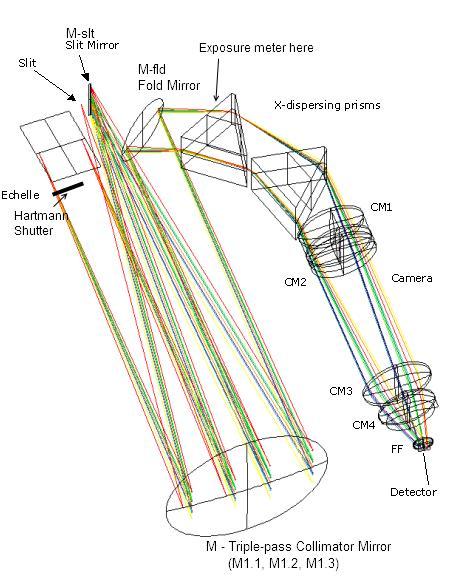 |
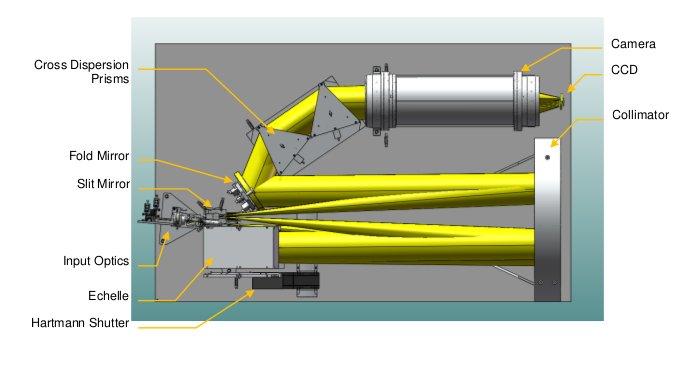 |
Image slicer Top
The two optical fibres terminate at an image slicer and slit unit. The design is based on Richard Bingham’s modification of the classic Bowen-Walraven image slicer. The slicer produces two 1.2" slices of a 2.85" fibre to give R = 60K.
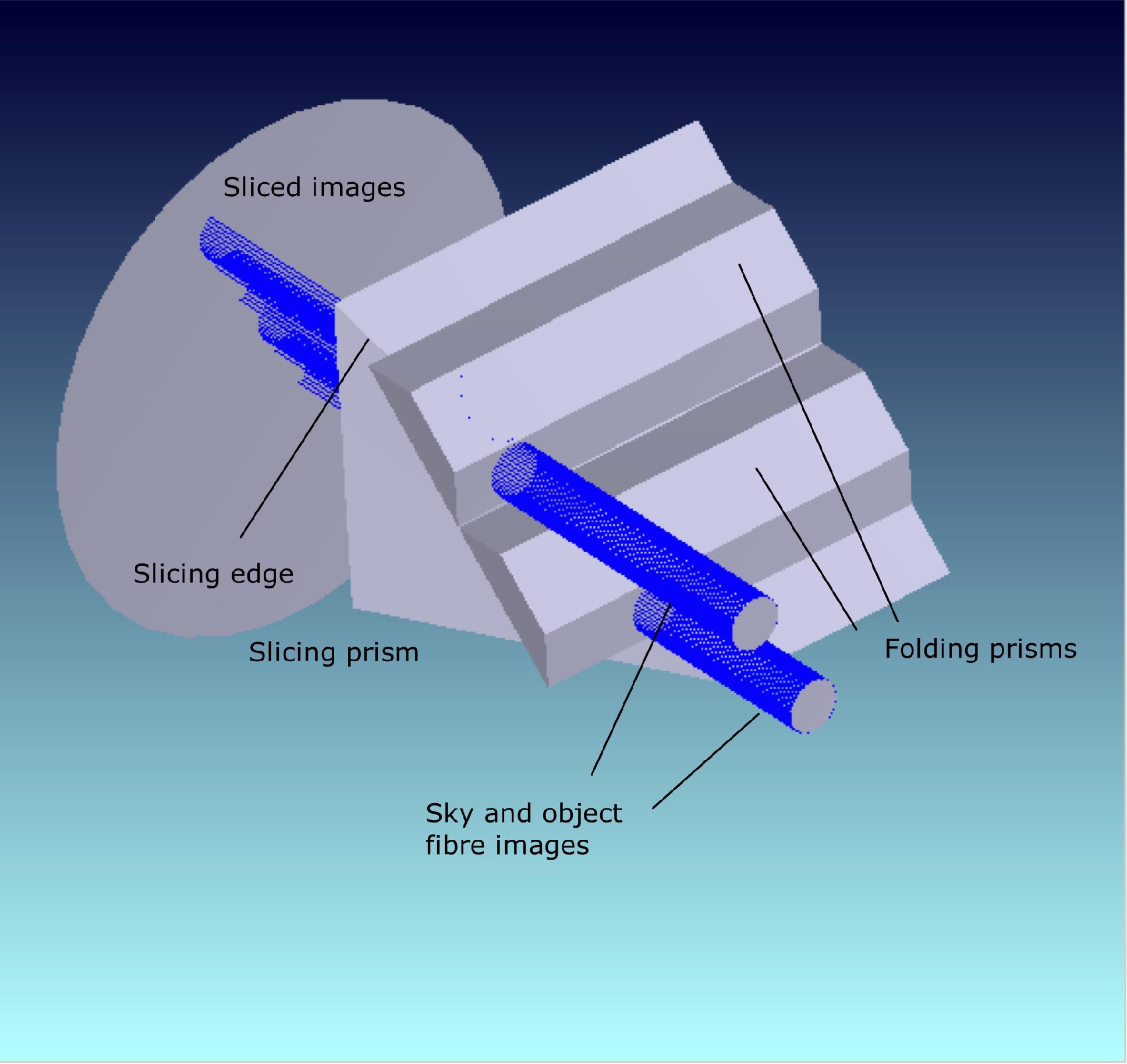 |
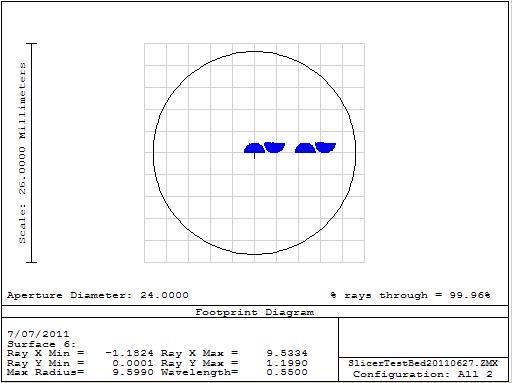 |
Wavelength format Top
The spectral format shown below is imaged onto a 4k x 4k CCD with 15 micron pixels which allows continuous wavelength coverage from 350 nm to 1000 nm. The minimum physical separation between orders is 0.4 mm. At the highest resolving power (R ≈ 60K) there is at least two pixels of clear background on the CCD between the object and sky spectra.
Order 35, 969.23 – 997.32 nm is forced to fit across 4088 pixels, thereby allowing 4 spare pixels at each edge. So the short dimension (4096 pixels) be in the direction of high dispersion.
The non-linearity of the cross-dispersing prisms’ dispersion and the lateral colour in the camera combine to place the most closely spaced echelle orders in the vicinity of order 43. This is shown in figure and it can be seen that at least two clear pixels separate the closest orders in high-resolution mode.
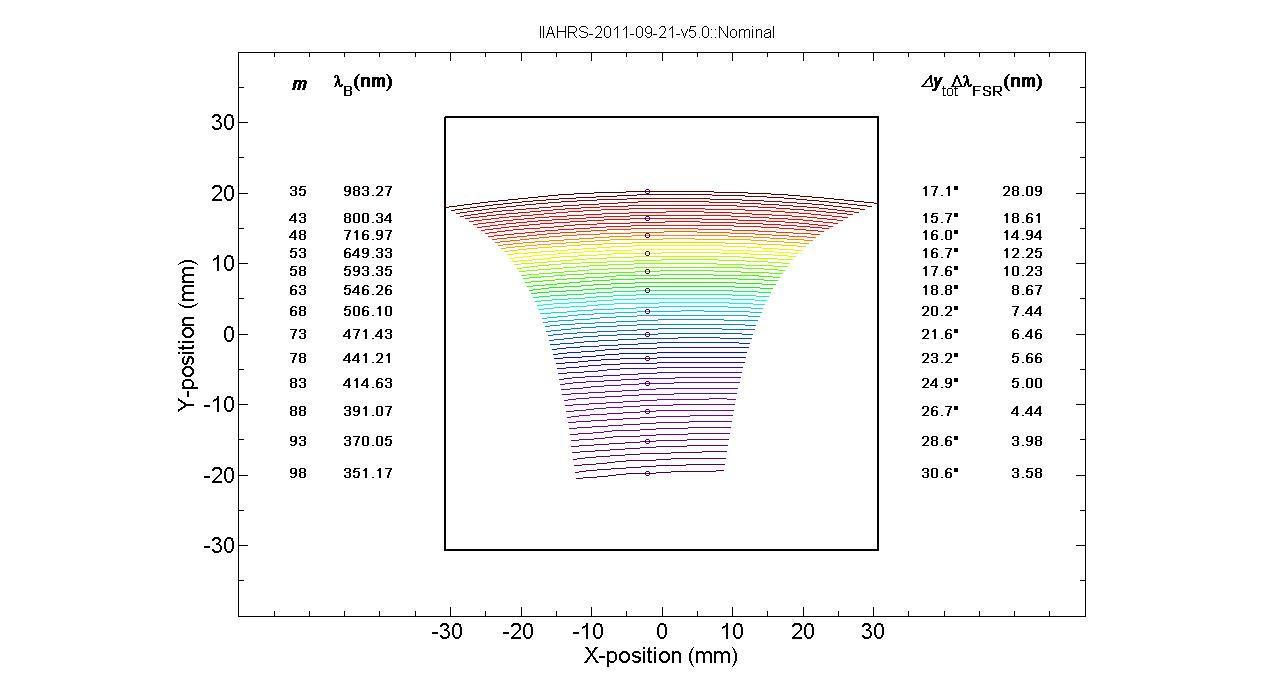 |

